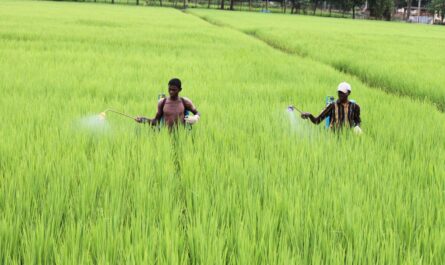Agricultural biology is a modern discipline that is revolutionizing the way we farm and produce food. By applying biological concepts and innovative techniques, agricultural biology is helping farmers overcome obstacles and boost production in sustainable ways. let’s examine some of the key developments in this evolving field.
Applications of Biotechnology
Genetic Engineering of Crops
One of the most significant developments has been the genetic engineering of crops. By isolating desirable genes from other organisms and inserting them into crop DNA, scientists have created genetically modified (GM) varieties with enhanced traits. For example, crops have been modified to resist herbicides, insects, diseases and environmental stresses like drought. This has increased yields while reducing pesticide use. Some key GM crops developed include herbicide-tolerant soybean, insect-resistant corn and virus-resistant papaya. Although controversy exists, most research shows GM crops to be safe for humans and the environment when properly regulated.
Microbial Applications
Agricultural biologists are also harnessing the power of microbes like bacteria and fungi. For example, nitrogen-fixing bacteria in the soil helps fertilize non-legume crops naturally. Mycorrhizal fungi form symbiotic relationships with plant roots and boost nutrient and water uptake. Beneficial microbes are even being developed as biopesticides and biofertilizers as more sustainable alternatives to chemicals. Some products contain Bacillus thuringiensis (Bt), a bacterium toxic to insects but harmless to humans and other organisms. Overall, microbial applications represent a growth area in sustainable farming.
Precision Technologies
Precision Agriculture Techniques
Precision or site-specific agriculture utilizes advanced technologies to precisely analyze field conditions and respond accordingly. Technologies like GPS, GIS mapping, aerial imaging, variable-rate applicators and yield monitors are used. GPS-guided auto-steering helps drivers plow, plant and spray only in desired areas with minimal overlap. Complex algorithms analyze soil composition, fertility, moisture levels etc. at micro-levels to determine optimal planting density, water and fertilizer needs. This “prescriptive farming” approach optimizes inputs, increases yields and protects the environment by reducing waste.
Remote Sensing and Big Data Analytics
Agricultural biologists are also tapping into remote sensing, big data analytics and other advanced techniques. High resolution satellite and drone imaging provides hyperlocal details on crop health, stress, disease etc. sophisticated algorithms then analyze this massive “agri-data” alongside field reports, climate patterns and more to predict yields, spot anomalies and help farmers make better decisions. Challenges exist around data standards and sharing, but the use of big data promises to revolutionize decision making in agriculture.
Livestock Management Systems
Precision Livestock Farming
Advances are also occurring in raising livestock more productively and sustainably. Precision livestock farming utilizes biosensors, tags, cameras etc. to closely monitor animals without human physical contact. Devices monitor health, behavior, weight changes and more to spot issues early. Automated feeding systems dispense tailored rations based on individual animal needs. Farmers can centrally control environmental factors like ventilation, temperature etc. from mobile devices. This “stress-free” approach improves welfare and productivity while curbing costs. Advanced reproductive technologies also boost fertility rates.
Alternative Proteins
While livestock will continue playing an important role, agricultural biologists are exploring more sustainable alternative protein sources. Microalgae and fungi are being studied as potential future sources given their high protein content and ability to be farmed anywhere, including vertically. Insects are also gaining interest for their nutritional profile and environmental benefits – crickets and mealworms are starting to appear in livestock feeds and human foods. Lab-grown or “cultured” meat produced from animal cells could theoretically reduce pressure on natural ecosystems. Overall, a mix of traditional and novel sources will likely shape the protein production systems of tomorrow.
Regulations and Ethical Considerations
As with any disruptive field, Agricultural Biology must thoughtfully address regulations and ethics to earn public acceptance. GM foods require thorough safety testing and traceability systems. Intellectual property rights around novel seeds and pathogens demand balanced policies. Precision technologies raise privacy concerns around collecting and sharing sensitive farm data. Emerging alternatives like algae, fungi and cultured meat will face regulatory hurdles. Overall, maintaining oversight while cultivating an environment for continued innovation will be key to responsible development. Public education around evidence-based findings will also improve understanding and trust in this promising but complex domain.



